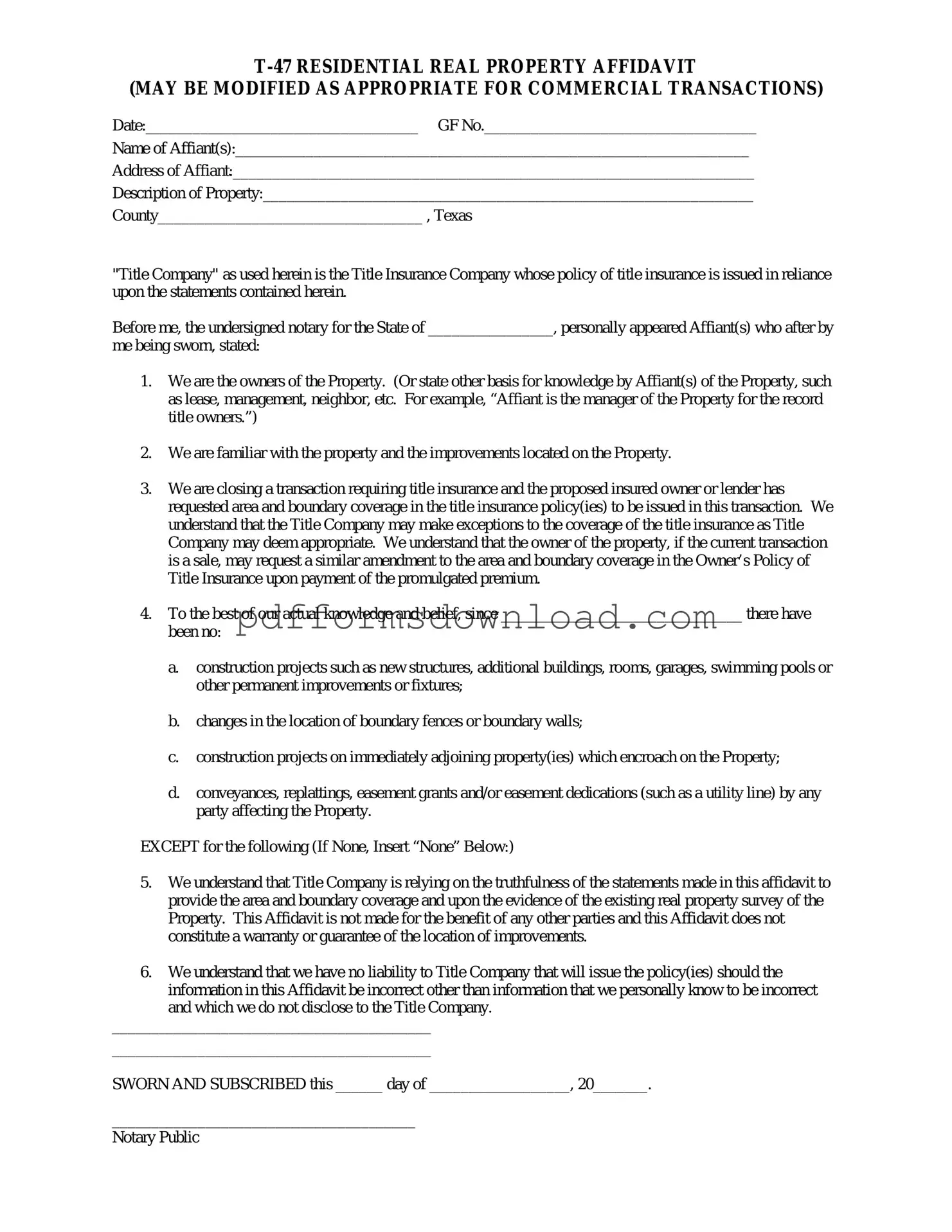The Texas residential property affidavit T-47 form is a document used in real estate transactions. It serves to affirm certain facts about a residential property, particularly in relation to the ownership and the absence of any encumbrances or liens. This form is often required by lenders during the mortgage process to ensure that the property being financed is free of issues that could affect its value or ownership rights.
The T-47 form is typically completed by the seller or the current owner of the property. It is essential for individuals who are selling their home and wish to provide assurance to potential buyers and lenders regarding the status of the property. Completing this form helps streamline the closing process by clarifying ownership and the condition of the property.
What information is included in the T-47 form?
The T-47 form includes several key pieces of information. It typically requires the owner's name, the property address, and a declaration regarding the absence of any liens or claims against the property. Additionally, the form may ask for details about the property's use and any improvements made. This information helps create a clear picture of the property’s legal standing.
How does the T-47 form affect the closing process?
Completing the T-47 form can significantly expedite the closing process. By providing a clear statement about the property’s ownership and condition, it minimizes the risk of disputes arising at the closing table. Lenders appreciate having this information upfront, as it helps them assess the property’s value and the legitimacy of the transaction.
Is the T-47 form legally binding?
Yes, the T-47 form is a legally binding document. When the seller signs the affidavit, they are affirming the truthfulness of the statements made within it. If it is later discovered that the seller provided false information, they could face legal repercussions, including potential liability for damages suffered by the buyer or lender.
Can the T-47 form be modified after submission?
Once the T-47 form is submitted and signed, it is generally not advisable to modify it. If changes are necessary, it is best to discuss these with your real estate agent or attorney. They can guide you on how to properly address any discrepancies or updates, ensuring that all parties are informed and in agreement.
Where can I obtain a copy of the T-47 form?
The T-47 form can typically be obtained from a variety of sources, including real estate agents, title companies, or online legal document services. Many title companies provide this form as part of their closing services, so reaching out to your title company is a good starting point if you need assistance.
What happens if I do not complete the T-47 form?
Failing to complete the T-47 form can lead to complications during the closing process. Lenders may refuse to proceed with the mortgage if they do not have the necessary assurances about the property. This can cause delays or even derail the sale altogether, potentially resulting in lost opportunities for both the seller and the buyer.
Are there any penalties for providing false information on the T-47 form?
Yes, providing false information on the T-47 form can lead to serious consequences. If a seller knowingly submits inaccurate information, they may face legal action from the buyer or lender. This could result in financial penalties or a lawsuit, in addition to reputational damage in the real estate market.
